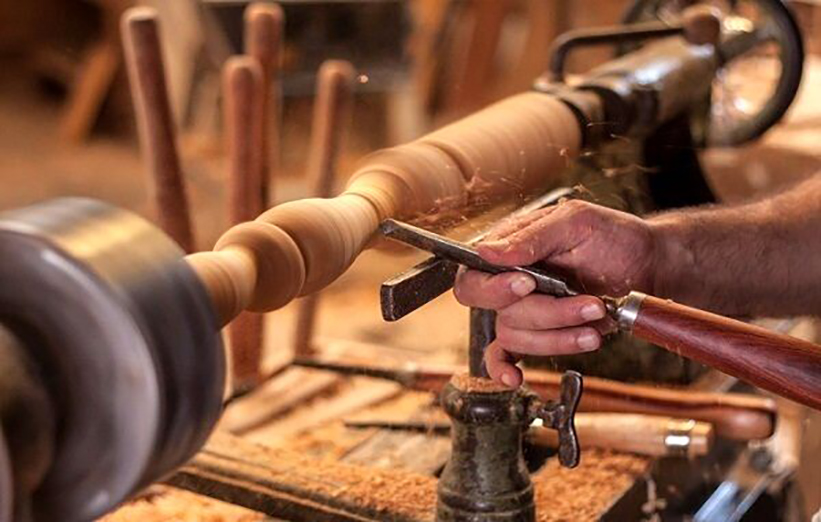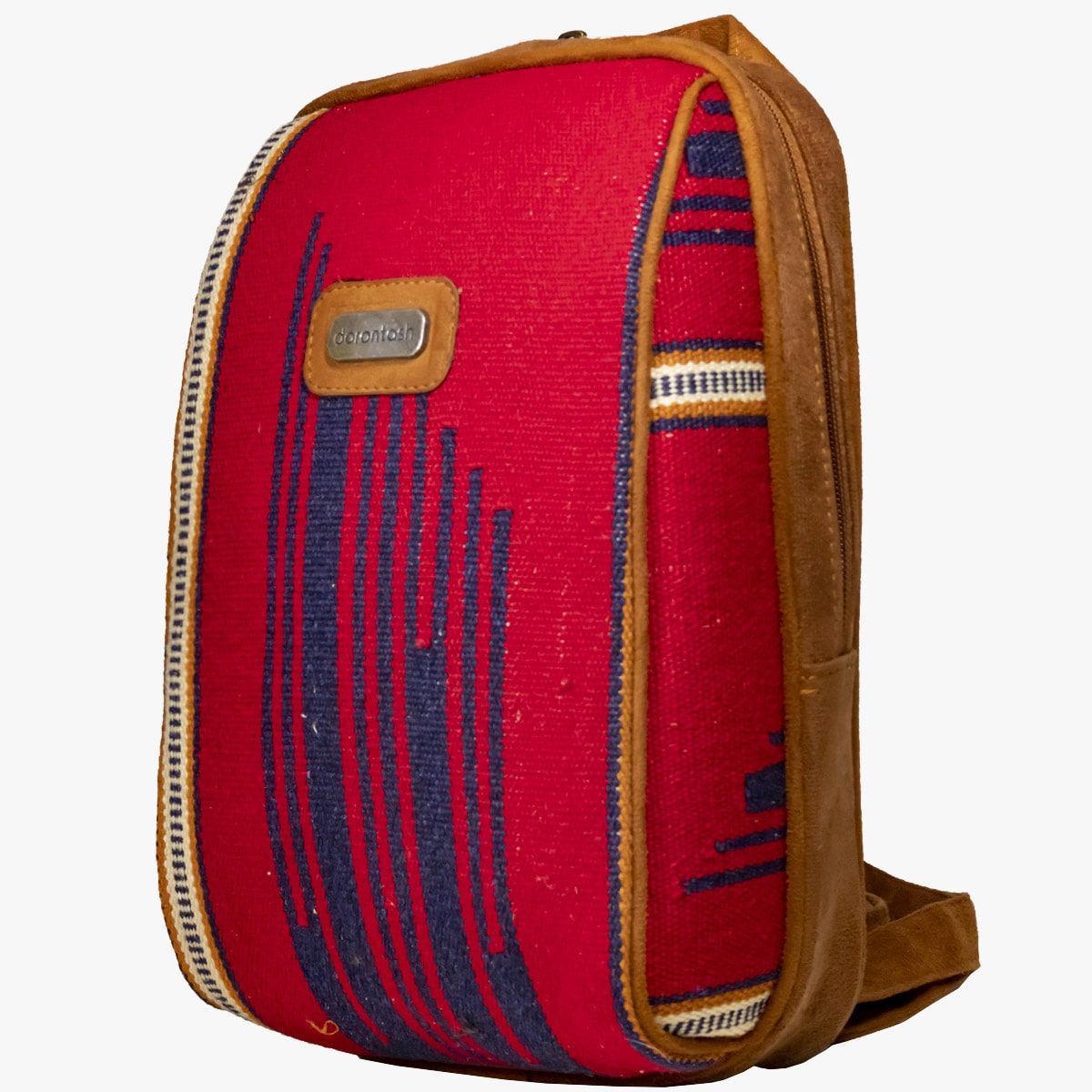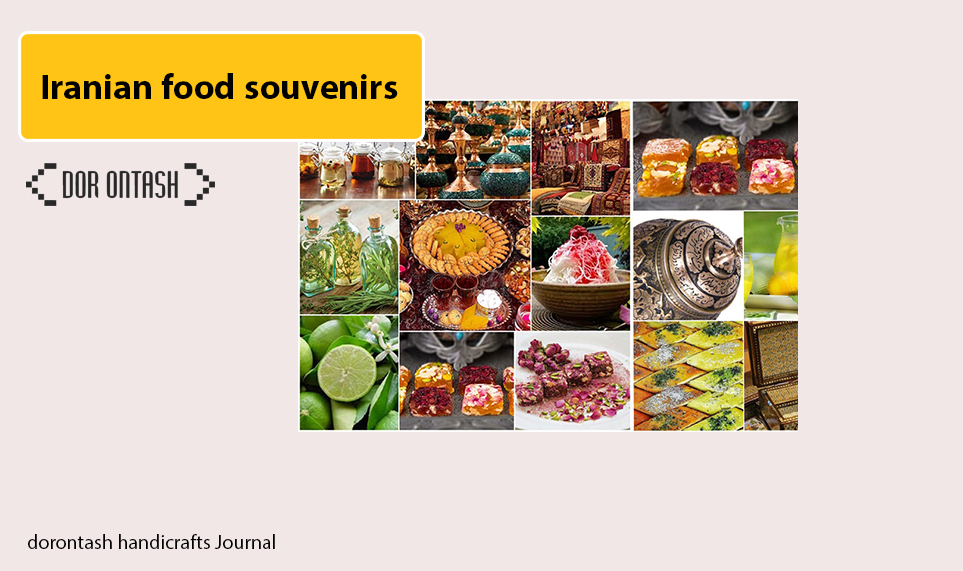The most popular handicrafts of Iran
Wherever you go in Iran, you can see male and female artists who produce examples of the best and most popular handicrafts of Iran with their heart and soul. The diversity of these handicrafts is so high that it is not possible to introduce all of them completely, and therefore we have to name examples from each province of the country that are known as the most popular handicrafts of Iran.
1. Metal crafts
Among the metal handicrafts of Iran, we can point to various items, the most famous of which are brushwork, engraving on metal , and mesh work. In other words, the shaping and decoration of metals to make decorative and practical objects by means of different tools and methods in a volumetric and flat form is called the art of metalworking.
The diversity of traditional metal works and objects is caused by the three factors that make up handicrafts, namely, the type of use, appearance and method of making them.
We can call this art a metal hand art, which in the past was generally done on silver, copper and gold dishes. Painting is one of the practical and decorative handicrafts in Iranian handicrafts, during which various arts are performed on a container made of different metals.
These days, we can generally see the art of writing on metals such as copper and bronze. The art of calligraphy has a very long and strong history in Iran. This art was so popular and valuable that the artists themselves made a container or a device on which they wanted to paint.
2. Pottery handicrafts | The most popular handicrafts in Iran
Pottery and pottery in Iran has a long history and the history of this art in Iran is not known correctly, but during the excavations that took place in Tepeganj in the west of Kermanshah and in the Gherd Cave in Behshahr, Mazandaran, the oldest pottery related to The “Neolithic” period was discovered in the 8th millennium BC. The Iranian Plateau is one of the most important regions in West Asia, which played a role in the emergence and expansion of the pottery industry. Many pottery objects have been found in the archaeological excavations of Iran. Due to the specific geographical location of Iran, which is located at the intersection of ancient civilizations and on the routes of important caravans, the art of salgari has been common in almost different periods in a part of Iran; Such as the areas west of the Zagros mountain range (Lorestan), the area south of the Caspian Sea (Gilan and Mazandaran provinces), the areas in the northwest part of the country (Azarbaijan province) and also an area in the southeast of Iran.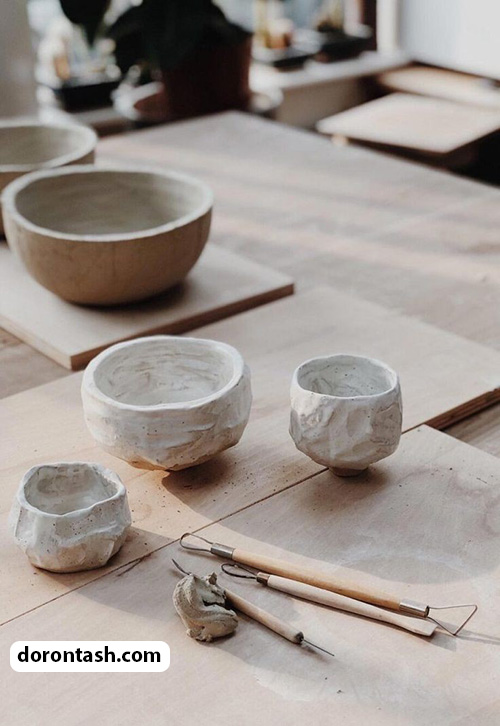
These characteristics and the brilliant record of pottery art in Iran show that we can have a significant activity in this field and by developing this industry in different parts of Iran, we can build a better country in many ways.
Currently, the “Laljin” area in Hamedan is one of the areas known as pottery in Iran, and many workshops have been operating since the past. Of course, other cities such as Meibod Yazd, Mand Gonabad, Mazandaran, Semnan, Gilan, Golpurkan (Baluchistan) and… are also active in this field.
3. Wooden crafts
Wooden handicrafts are one of the delicate and attractive handicrafts that anyone can see its art and beauty. A delicate and beautiful wooden work created by hand shows the taste of its creator for many years, and since its raw material, which is wood, is abundant and naturally present in some parts of Iran, the types of handicraft products that They are made of wood or tree trunks and are also welcomed.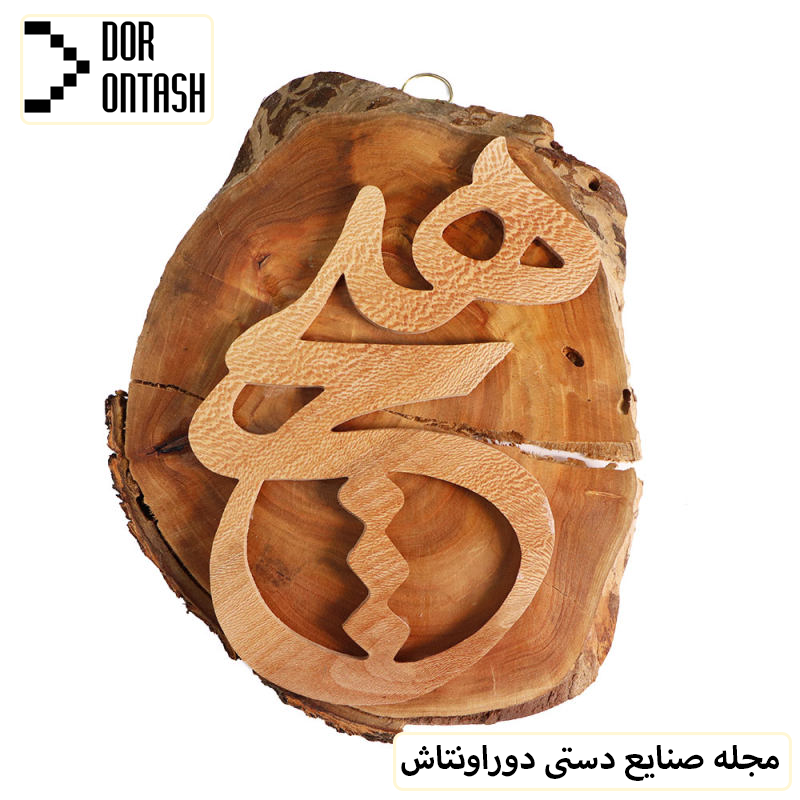
Carving (traditional wooden sizes):
Wood carving is one of the branches of wood handicrafts, in which the carver designs the general anatomy of the human body, birds and animals in different situations, and transfers various designs to the wood using suitable tools and wood. He sculpts and leaves behind magnificent historical works.
Maraq: One of the most beautiful arts and delicate works on wood is Maraq. Beautiful wooden designs are created through cutting with a needle, which is then oiled to make it shiny.
Khatam Kari: Khatam is the art of decorating the surface of objects with small triangles, the various designs of which have always been regular geometric shapes.
Carving: Carving is one of the arts and handicrafts of wood, which depicts patterns and designs in a prominent form and is obtained from carving on wood.
Lattice work with wood: One of the practical handicrafts is called ((wood lattice)). Lattice work is often associated with other arts related to wood (especially inlay). To implement mesh work, after implementing the desired design on the wood, the negative parts of the design are removed with the help of a tool such as a hacksaw and a hacksaw, so that the original design remains in the form of a mesh.
Sash: It is a type of wooden window that has various designs and dimensions and includes colored glass, which is now less manufactured and is produced only for beauty and decor and on a smaller scale than before.
Fuel on wood: In the art of fuel on wood, different molds are made of steel or brass, which have the desired traditional motifs. By heating these molds on fire and pressing it on wood and transferring the effect of this burn, beautiful works of art are created.
4. Handicrafts of mat weaving
One of the oldest human-made artifacts is the mat. Mat weaving is the weave of threads obtained from plant fibers. The few examples found in the Mesopotamia and Africa show that the owners of these civilizations used reeds and plants grown in the swamps of the Mesopotamian plains for the purpose of weaving straw mats. Of course, according to historical research, the use of this natural weave was more than a simple underlay.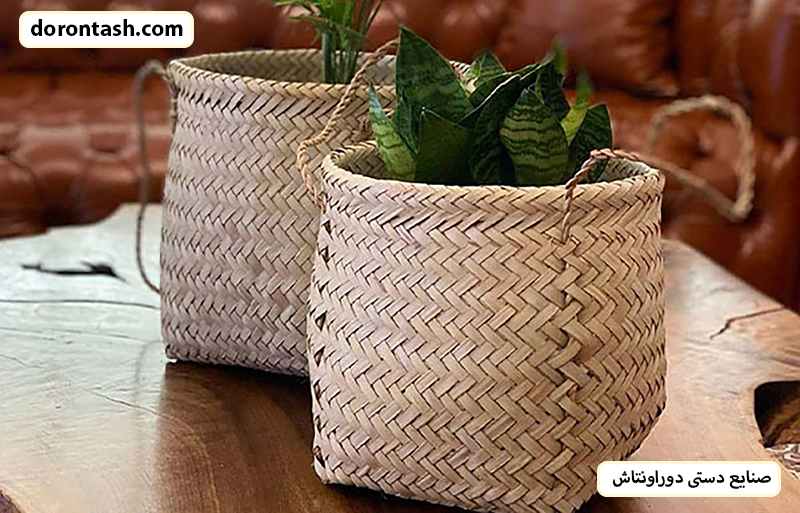
Along with countries like Japan, Korea and Mexico, Iran is one of the sixteen mat producing countries. The historical background of these products in Iran shows that the use of mats by ancient Iranians was not limited to underlays, and they also used mats to make dishes. Even today, unlike the main use of mats, i.e. mats, wicker containers are more popular among handicraft enthusiasts.
5. Leather crafts The most popular handicrafts of Iran
The traditional leather embroidery profession (Saraji) is one of hundreds of Iranian handicrafts . This art is an original art from the Kermanshah region , which has recently been registered in the national register .
Leather is obtained by tanning the raw skin of animals , especially cows . The tanning process transforms the perishable skin into a stable, permanent and flexible natural material for various applications. Another definition of leather making is that it is actually the conversion of a perishable raw hide product into a non-perishable product, the same as leather. Leather making is a reciprocating operation in the sense that in converting raw hide into leather, the two layers of the epidermis (epidermis), the first layer of the skin, and the hypoderm (hypoderm) , which was the third layer of the skin, are removed and only the dermis layer is converted into leather by converting The second layer of Curium should be applied to the leather He artificially added two layers of epidermis and hypodermis to it.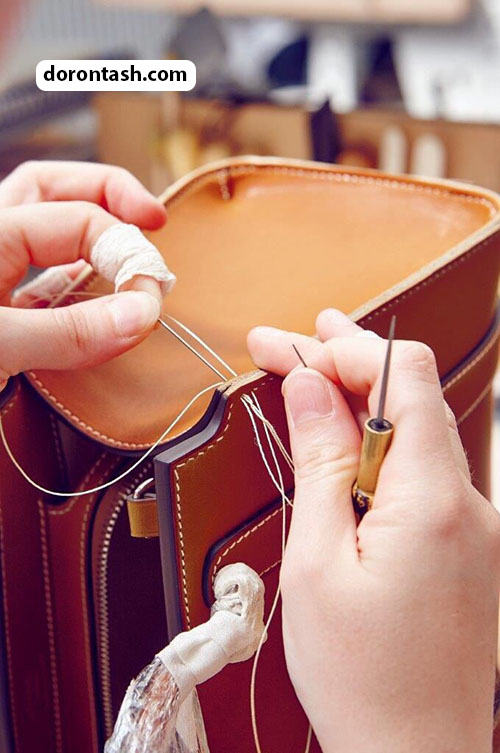
It should be noted that the leather industry and the fur industry are different and this difference is the importance of the raw materials used in each of them. The raw materials used in the leather industry are the by-products of the meat industry , and the meat is more valuable than the skin, but the raw materials used in the fur industry are more valuable than the meat. Meat is considered as a side product. There are several ways that the result of them is that the skin of the animal turns into a flexible and strong material called leather. Leather has various uses in making clothes such as pants, ties, gloves, coats, jackets and shoes and accessories such as bags and key chains .
6. Textile crafts The most popular handicrafts of Iran
It cannot be denied that in the not-too-distant times, most of the winter clothes were woven by mothers in the hot summer, or the weaving of various fabrics was prepared with materials available to Iranian women. These apparently simple activities at home are considered home businesses. If these products are diversified and increased in production, they can be sold to others. Women will earn a lot from these structures. In addition to women, men also use this profession to earn money. Below we will introduce the most important traditional textile hand products: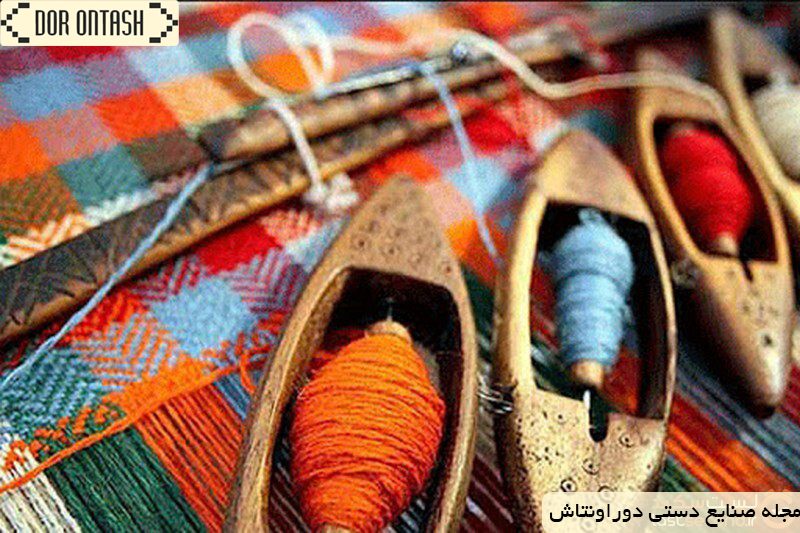
– Textile industries (traditional textiles): one of the valuable arts of Iran is the types of traditional handicrafts that Iranians have been engaged in for a long time.
- Net weaving: using nets to weave rugs and pads and nets. (Fishing net is also called weaving net)
- Shawl weaving: It is one of the traditional activities of Talash and the summer residents of Gilan. Shawl is a kind of coarse and monochromatic fabric made of sheep’s wool, which is woven in a shawl weaving machine. The best shawls are woven in Kobolan village, which can compete with foreign coats. But alas, this art is being forgotten in the region.
- Zarbafi: It is one of the authentic Iranian arts. Zari fabric is a fabric woven from gold whose warp and weft is woven from silk and glabton fibers. Glabton is a thread with a narrow strip of gold, silver or gold-plated silver, made in a spiral. In traditional zari weaving, both the warp thread and the weft thread are made of silk.
- Wave weaving: It is one of the traditional arts of the Kurdish people, which is mostly seen among nomads and nomads. A cloth made of woven sheep’s wool. It is used as a bed, blanket, back, etc.
- Woven Cashmere: It is a fabric made of fluff and wool or silk. Delicate and delicate fabric that consists of two series of warp and weft threads. The weft on the back of the fabric is loose and dense in the weft.
- Woven velvet: Velvet is a fabric made of silk or cotton yarn, one side of which is smooth and the other side has short, dense and soft piles. These villi are close to each other and lying on one side. It is used in various designs on the top of sofas, chairs, tablecloths, bedspreads, cushions and clothes. This art is also being forgotten.
- Silk embroidery: sewing different designs with silk thread on fabric.
- And …
7. Weaving crafts
In Iran, very beautiful handicrafts are produced using the art of weaving. Knitting crafts are generally divided into three categories. 1-Machine weaves 2-Dari weaves 3-Straw weaves
For the texture of all three models, they use thread or mat for warp and weft and create a very interesting texture with knots and a kind of interweaving. Next, we will examine the types of texture. Stay with us.
8. Enamelware
Minakari or Minasazi, as one of the most popular handicrafts in Iran, is rooted in Iranian history and culture. Some sources attribute the history of enamel crafts to 1500 BC. During the enameling process, enamel colors are used on various surfaces such as metal, glass, pottery, ceramics and tiles.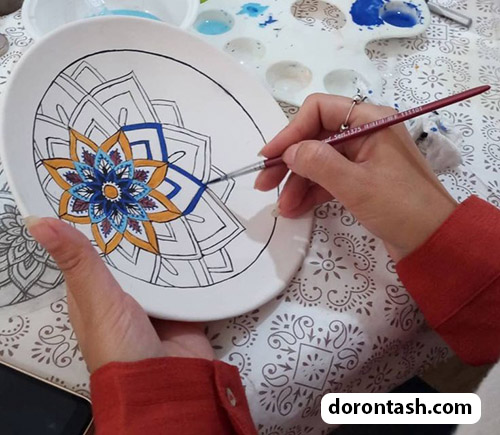
In enameling, natural and chemical elements are combined with the powder of precious stones such as gold, copper, tin, iron, etc., and produce enamel color. Any surface that we want to enamel on is first glazed, and then, according to enamellers, seven colors are used on the surface, which is the same as the enamel decoration stage.
9. Khatam work
In the past, inlaying was often seen in the houses of the nobles who could afford the costs of this art; For example, to decorate picture frames, walls and windows. The oldest surviving work of the seal dates back to a thousand years ago, which is the pulpit of the Atiq Mosque in Shiraz.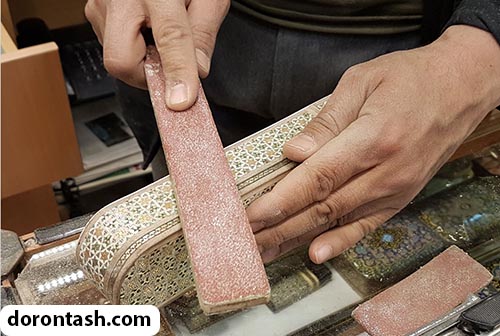
Today, in some special works, inlay is used to show as much as possible. Due to the relatively reasonable price of inlay, this Iranian art can be found in many Iranian homes, and of course, apart from many applications in decorative and necessary accessories such as: page Chess pieces, jewelry boxes, chocolate containers are also widely used and welcomed outside homes.
10. Turquoise Kobe
Turquoise is one of the precious stones known in Iran since ancient times. From the foundation inscription of the palace of Darius the Great in Susa, it is known that in that date turquoise is called Ehsayin and was brought from Khwarezm to decorate the palace. Turquoise is the stone of the wishes of the kings of all civilizations since the time of Cyrus and Darius the Great, which was given as a gift by them to the kings of other countries. Persian turquoise is the highest quality turquoise in the world, and in Europe, Persian turquoise is used as an example to define the quality of turquoise.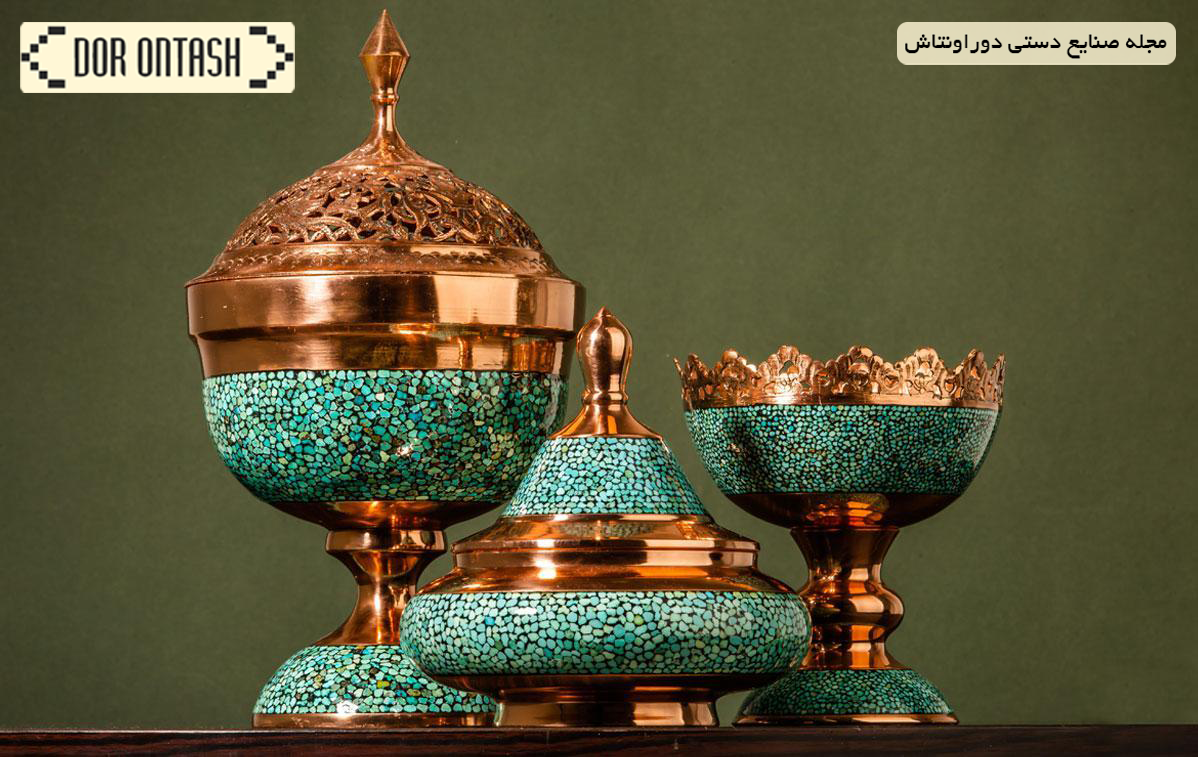
In Europe, turquoise was called “Turquoise Stone”, which means Turkish stone, and the reason for this name was that Iranian turquoise was exported to Europe by Turkic speakers. In Italy, smooth blue turquoise, which is known as ” blue gem “, is used as an expensive jewel, and in the necklace of the Queen of Egypt, turquoise obtained from the Sinai Peninsula (about 4000 years ago) was used. Is.
11. Carpet weaving
A carpet is a type of carpet without piles, which is created by the contact of taropods with each other. Usually, its warp is cotton and wool, and sometimes it is silk, and its weft is made of wool, fluff and silk threads. This carpet has different names in Persian language. Galim in Afghanistan – Gilim in Ukraine – Badas in Caucasus – Liat in Syria and Lebanon – Chilim in Romania, as well as Kilim in Turkey, Poland, Hungary and Saudi Arabia are among the different names.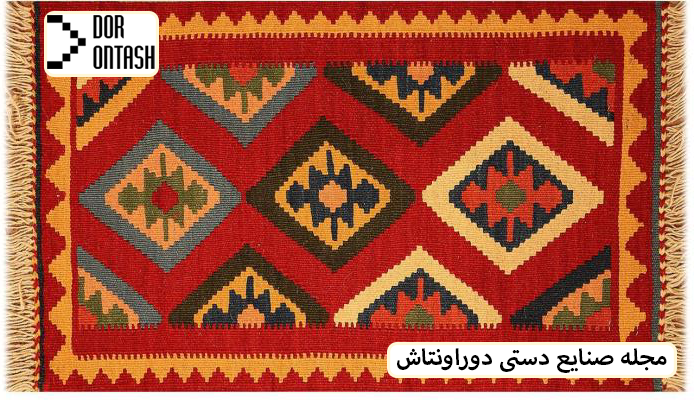
12. Felt handicrafts
The art of Mali felt in Iran can be attributed to Iranian tent dwellers who used felt as curtains for carpets and blankets, and the way of Mali felt has not changed much since the past and it is still prepared in the same style and style as before. Mali felt art can be attributed to parts of Chaharmahal and Bakhtiari province, Mazandaran, Gorgan Babol, Amel, Turkmen Eilat, part of Isfahan, Chaharmahal and Bakhtiari regions of Borujen, Qasr Shirin Bakhtran, Sarpol Zahab, etc.
The handmade felt products of Iran-Zamin artists have a wide variety. We can see felt underlays, padri, all kinds of felt clothing, coats, coats, hats, works of art, paintings, etc.
kilim bag
pesrian kilim bags is one of the famous handicrafts of Iran, which has gained many fans in Yemen for several years
13. Leather craft
Fur is one of the oldest forms of clothing, all or most of which is made directly from the skin of woolly animals.
Leather embroidery is one of the most popular handicrafts in Iran, which dates back to the time when people used the first thing they thought of to warm themselves, and signs of the use of leather can be found in the paintings on the walls of old paintings. Different classes of society used leather according to their social rank and ranking. Wealthy people wore the skins of more valuable animals such as tigers and leopards on their shoulders.
The leather embroidery industry has been passed down from our ancestors to today’s men and women from the past, and today Khorasan Razavi (Shandiz region) is one of the main production centers of this art.
14. Traditional clothing handicrafts
Different models of traditional clothing bring the color and flavor of the history and religion of each province. These clothes have attractive and colorful designs and with a glance you can identify the culture from which the traditional clothing was produced. The types of traditional clothing of each province depend on The history and type of culture are different .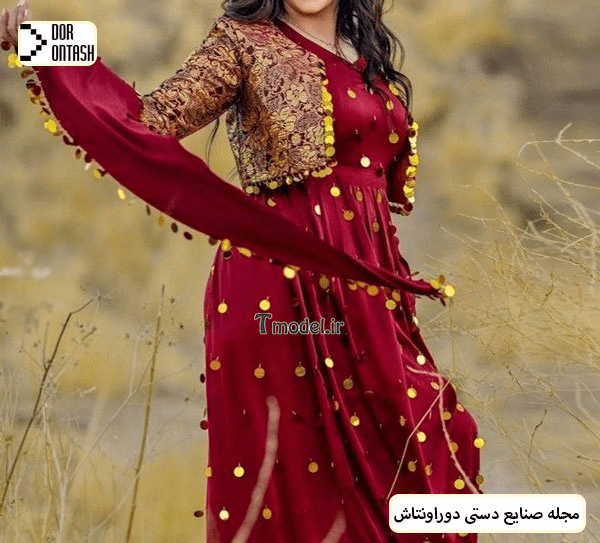
15. Woven crafts
Knitting handicrafts are one of the most famous and popular handicrafts in Iran, which are as old as the history of several thousand years of Iran. The main material of these handicrafts is yarn. In these handicrafts, various products are woven. Weaving handicrafts are done both by hand and by machine. These industries have a long history, but since their main material is yarn, they have disappeared over time, and the exact date of their origin cannot be estimated.
16. Kari tapestry
Using precious metals to produce handicrafts has become one of the best arts and at the same time the most difficult. One of the methods of using metals in making handicrafts is tapestry . In this art, silver wires or copper wires with silver plating are usually used for metalwork. This art is mostly used in Borujerd and Zanjan to produce different types of trays, flower pots, candies, etc. But in Isfahan, which is the cradle of handicrafts, Kari tapestry is used to make handicrafts with great delicacy.
17. Writing
18. Embroidery
This art is very old. At the time of Scythians and Scythians, penmanship was created for the first time. Scythians and Scythians are one of the most original Aryan races. To get to know the art of penmanship, you must be familiar with its age. Therefore, you should know that the Hasanlu Gold Cup dates back to 1336. This cup is made of gold metal and has beautiful and prominent patterns. The beautiful carvings of this cup are gods riding on chariots, which belong to the first millennium. During this period, Marik’s golden cup was also discovered. After that, in the period of the Medes, who lived in Iran in the seventh century BC, traces of pen writing are also seen.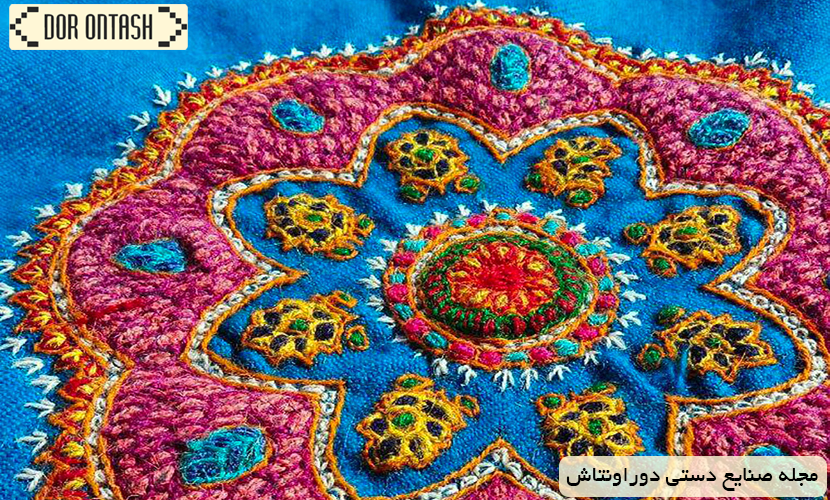
The art of penmanship caused a huge change in the Achaemenid regime. In fact, it can be said that this art was seen more than before.
Some of the Aryan calligraphy works were lost during the invasion of Alexander and the Mongols. Although this art is not only related to Iranians and the Romans and Greeks also benefited from this art, calligraphy in Iran has been and is more prosperous.
19. Copper work
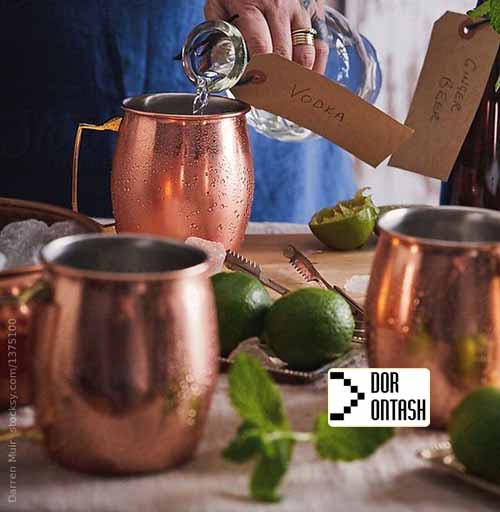
20. Wooden crafts
The art of carpet weaving in Iran is one of the most well-known branches of handicrafts in our country. The art of carpet weaving is followed with a little difference in different cities of our country. All types of Iranian carpets have their own characteristics and are considered unique products. Carpet weaving can be done part-time for women. The income of carpet weaving is not high, but some housewives are engaged in this industry. Carpet weaving training is done both in classes and workshops and traditionally in Iranian carpet weaving centers. Many Iranian women in different cities have turned to this profession to earn money. Carpet weaving has been done at home since ancient times and is considered one of the most popular handicrafts. The most popular handicrafts in Iran.